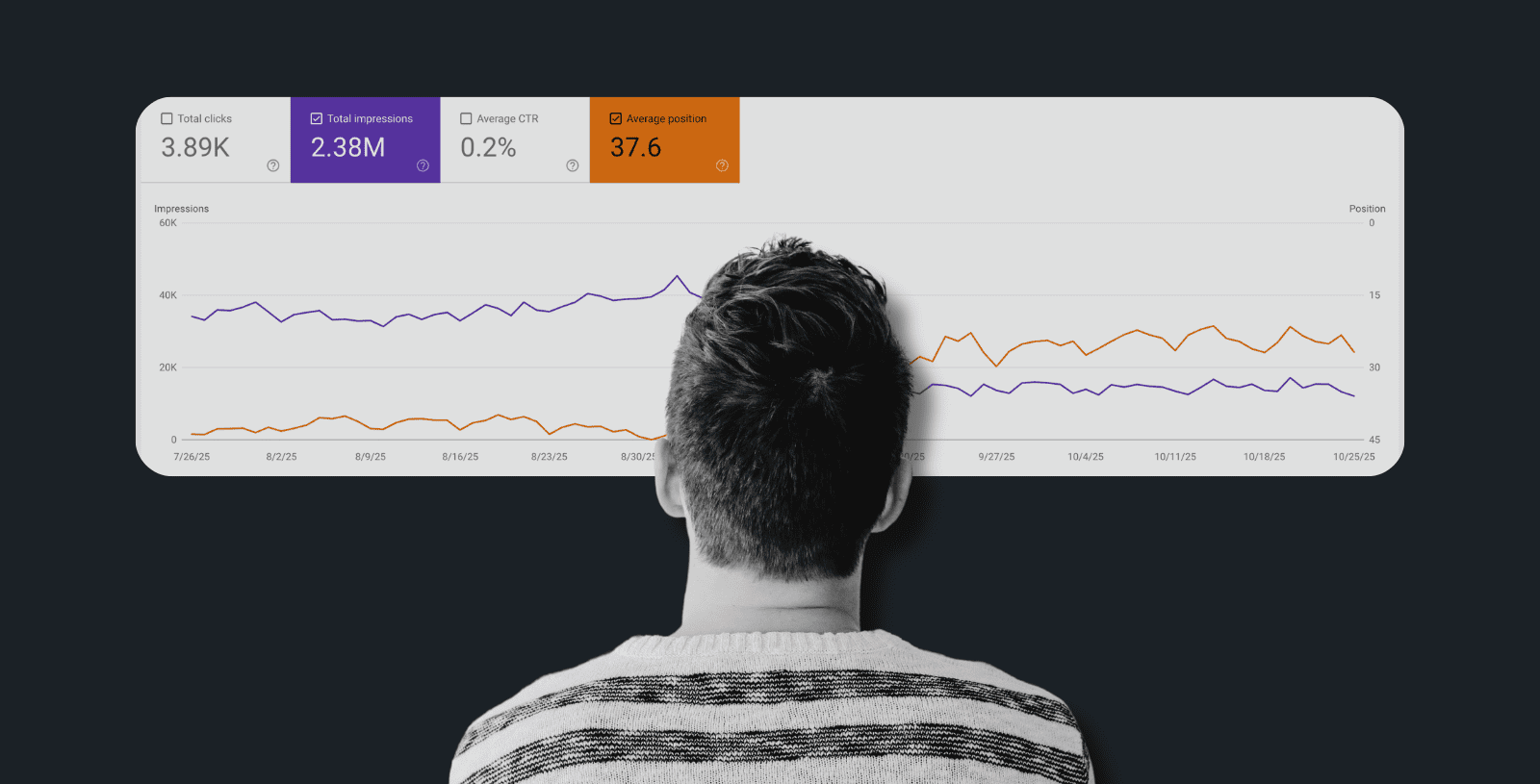If you’ve checked your Google Search Console lately and noticed a sudden drop in impressions starting around September 11, 2025, you’re definitely not the only one. It’s been happening across the board. And naturally, a lot of people started to panic.
The good news? Your site isn’t broken. In fact, this is one of those rare cases where a scary-looking dip in your metrics could actually be a good thing.
The Big Change: Google Stopped Showing 100 Results Per Page
Here’s what happened: until recently, you could add a simple parameter (&num=100) to a Google search URL and get up to 100 results per page.
This was a goldmine for rank tracking tools and SEO platforms, because they could easily collect tons of ranking data in one go. But on September 11, that option quietly disappeared. Now, Google caps results at the default (usually 10 per page), and scraping that same data suddenly costs tools ten times more; these tools must now load 10 Google SERPs to collect the same data (organic websites rankings, positions 1 to 100) as before.
So what does that mean for you? It means the way your site shows up in data (especially in GSC) for some metrics has shifted, even if nothing on your end has changed.
Why Your GSC Numbers Look “Worse” (But Aren’t)
Here’s what most site owners are seeing:
- Impressions are down. Your pages might still rank, but impressions from positions 21 to 100 have been impacted for most websites. Those were usually bots or scrapers, not real people, so losing them isn’t actually a big loss.
- Average position is up. Since those irrelevant impressions are gone, your average ranking looks a bit better, even if your real positions haven’t moved.
- In some cases, click-through rates (CTR) could be up. If your website has a considerable loss in impressions, but clicks have remained stable (which is the most likely scenario), you could have observed that your CTR % has improved.
Basically, Google is now reporting cleaner, more meaningful data; data that better reflects your website’s organic performance with users, not bots or scrapers. Before, you were counting a lot of noise. Now, you’re measuring actual visibility.

Why Those “Lost” Impressions Didn’t Matter Anyway
It might feel weird watching impressions disappear, but here’s the truth: many of them weren’t valuable in the first place.
Most people don’t click beyond the first few pages of search results. So when your page was ranking in position 70 or 90, it was mostly bots and crawlers generating impressions, not real searchers.
With the &num=100 trick gone, your data is now mostly focused on the impressions that do matter: the ones from users who are actively searching for what you offer.
A Shift in How SEO Success Is Measured
This change is quietly reshaping how we think about SEO performance. For years, high impression counts were a feel-good metric. But they weren’t always useful.
Now, the industry is being nudged to focus on what really counts:
- Visibility in the top 20 results, where users actually click.
- CTR (click-through rate) and conversions, not just raw visibility.
- More accurate attribution and relevance signals.
So if your impressions are down, but rankings (mostly positions 1 to 20), clicks, and conversions are steady (or even improving), you’re doing just fine.
Is This Change Permanent? It Appears So.
Here’s the deal: this isn’t a bug, it’s intentional. When pressed for details, Google responded (but not with much clarity):
“The use of this URL parameter is not something that we formally support.”
In other words, the feature’s gone for good. Google didn’t explain why the change was made, whether it’s to curb scraping, tighten control over data access, or something else entirely. What’s clear is that the old workaround no longer works, and rank-tracking tools will need to adapt fast.
If there’s any silver lining, it’s that this might push analytics toward more accurate, human-driven data.
The Bottom Line
A sudden dip in GSC impressions doesn’t mean you’re losing traffic or visibility. It probably means your data is finally reflecting reality.
Think of it as Google cleaning the lens on your analytics. Now you’re seeing a sharper, more accurate picture of how people are truly finding you.
Sources:
Google Search rank and position tracking is a mess right now – Search Engine Land
Google num=100 impact on data – Search Engine Land
The future of rank tracking can go two ways – Search Engine Journal
Subscribe to The Shift Factor
Our newsletter keeps you in the know on marketing’s biggest shifts and real examples of brands adapting.
ABOUT THE AUTHOR
Dimitri Lemieux
Dimitri is an SEO Specialist at Bloom. He is passionate about digital strategy, data-driven optimization, and helping brands grow their online visibility through thoughtful and sustainable SEO practices.




Share this: